The Versailles Century (1682-1789) played out all over the world, thanks in large part to the colonial empires of the European powers, particularly Spain and Portugal. The latter’s easternmost possession, Macau, is home to the beautiful St. Joseph’s Church.
Macau’s most famous church is of course St. Paul’s, of which only the iconic facade remains. Most visitors to Macau see (or are taken to see) no other church.
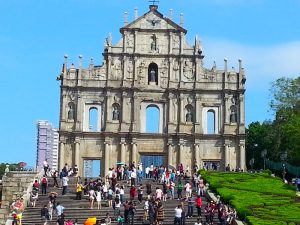
The world-famous ruined facade of St. Paul’s, the iconic sight of Macau.
The victim of a catastrophic fire in 1834, St. Paul’s had also previously been the home of the first European institution of higher learning in the Far East, St. Paul’s College.
By this time, Macau’s golden age was long past. For its first 80 years, the Portuguese outpost had been obscenely rich off the Japan-China trade. It was in this period that St. Paul’s Church and College were founded and richly endowed. In 1639, however, the Japanese shogun banned the Portuguese from Japan and forbade them to trade, which crashed Macau’s economy overnight. For the next 2 centuries, it eked out a meagre living from local commerce and the sandalwood trade with Timor, another Portuguese possession.
Meanwhile, the Jesuits were prospering at the Qing court in Peking, or Pequim, as Beijing was called by the Portuguese. Learned Jesuits served the Manchu emperors as astronomers, cartographers, artists, and even composers. By 1728, they felt the need for a base for the training of missionaries in Macau, the Rome of the Far East. They established St. Joseph’s Seminary in 1728, which thereby joined St. Paul’s College as one of the only 2 European institutions of higher learning on the eastern Pacific rim. The seminary is not open to visitors, so unfortunately I have no photos to show you.
On the other hand, the attached Church of St. Joseph, begun in 1758, is open daily. In my opinion, it has the most beautiful facade of any baroque church in the East.
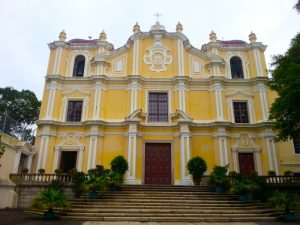
The facade of St. Joseph’s Church in Macau.
Note the broken pediment over the main door. This Roman baroque architectural trick allows the installation of a larger window than would otherwise be possible. It’s a trick that really pays off when you see the light-filled interior.
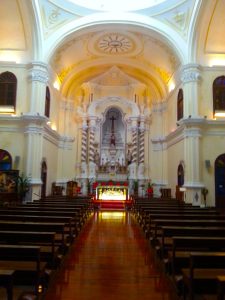
Interior of St. Joseph’s Church in Macau.
Further light floods in from the oculus in the ceiling. I’m not an architectural expert, so for further details, I refer you to the relevant page on the website of the excellent Macau Heritage website: http://www.macauheritage.net/en/HeritageInfo/HeritageContent.aspx?t=M&hid=31
The church and the seminary are both still functioning institutions, which is why the seminary is off limits to visitors. The seminary, in fact, now belongs to the recently created University of St. Joseph, which bills itself as the heir to the tradition of Catholic higher education in Macau. It’s apparently also affiliated with the Catholic University of Portugal.
If you enjoyed this post and you’d like to see more Macau content, please visit my Asia-focused blog: http://www.lotusandpersimmon.com







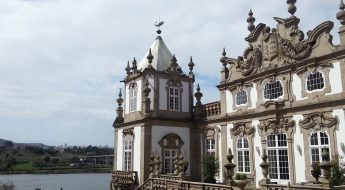
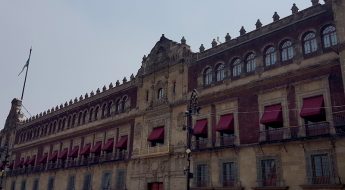
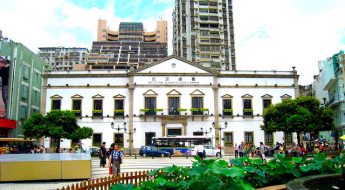








Leave a Comment